Digital receipts are now a staple of consumer transactions.
They are accessible in apps across our devices, providing a rich new data source for businesses to tap into.
Why it matters: Collecting digital records such as receipts unlocks powerful insights related to consumer behaviors and competitive benchmarking:
- Market Share: Evaluate brand and product performance.
- Analyze Consumer Behavior: Track purchase patterns, frequency, preference, and products commonly purchased together.
- Identify Trends: Spot emerging trends, seasonal buying habits, price, and promotion sensitivity.
- Competitive Intelligence: Gain insights into competitor pricing, promotions, loyalty programs, and basket composition.
Zoom-In: Keep reading to learn how digital receipts can be used to track market dynamics, the benefits of this methodology compared to traditional research, and the innovative ways receipt data can be aggregated to inform business strategy.
- Keep in mind, any type of digital record can serve as a data source, such as shipment tracking numbers, loyalty programs, delivery confirmations, subscription renewal notices, and fitness apps.
Receipt Capture Programs
Receipt capture programs systematically collect digital receipts within a defined vertical to provide continuous or snapshot understandings of market dynamics in sectors like e-commerce platforms, airlines, hotels, ride-sharing apps, and streaming services.
What it solves: Brands are typically aware of how their customers engage with their products but often lack visibility into competitor interactions. Traditional research asks respondents to state their brand purchases, types, and frequency, which offers directional insights but has drawbacks:
- Consumers may not remember all purchases.
- Self-reported data lacks granular details like transaction amounts, dates, and product variations.
Receipt capture programs provide data validity and access to dozens of data fields for analysis. Once collected, structuring receipt data efficiently is critical. Using Optical Character Recognition (OCR) technology, the data fields can be processed and organized for analysis.
- OCR is a technology that converts images of text into editable and searchable digital text by analyzing and interpreting the shapes of characters.
The process: Each program is tailored to the specific business needs, here is a generalized overview:
- Design: Define which brands and sampling locations are in scope; explore digital receipts and identify which data fields are important; choose a time frame during which transaction dates will be eligible.
- Test: Confirm the efficiency and accuracy of data capture; uncover nuances across operating systems (OS) and receipt type; discover and solve for any challenges.
- Fieldwork: Apply a systematic and representative approach to recruiting participants; collect receipts and store them on a secure platform.
- Aggregate: Use OCR to extract data and build a system that maps this data to a structured database that is customized for the program’s objectives.
- Repeat: For continuous learnings, repeat the program for a subsequent time period.
5 Big Things
Through extensive experience in designing these programs, here are five key insights:
- In-person fieldwork for accuracy. Collecting digital receipts in person, with human oversight, ensures the highest level of accuracy. In fact, engaging consumers directly provides for stronger representation compared to online panels.
- Consumers are willing to submit receipts. While some decline, there are no meaningful differences among this group compared to those that agree to participate.
- Implement quality controls. Build an understanding of where the data is coming from and capture the right proof points to ensure the participant has done a comprehensive job of providing information.
- PDFs are optimal. Consistently formatted PDFs are ideal for aggregation using OCR.
- OCR is scalable, fast, and highly accurate. The technology is capable of processing thousands of digital receipts in hours. OCR extracts key data fields with over 95% accuracy, further enhanced by manual review.
Ultimately, digital receipts represent an emerging opportunity for competitive insights that are otherwise hard to reach. Through systematic collection and OCR technology, receipt capture programs offer accurate, scalable, and customizable data.
In the digital era, every record – from receipts to email confirmations – serves as a potential data source. Digital receipts are just one example of how everyday digital records can unlock valuable information about consumer behavior and market trends. Consider the array of digital records within your vertical, think about how you could define a program that systematically captures them and provides insights for your business.
About KS&R
KS&R is a nationally recognized strategic consultancy and marketing research firm that provides clients with timely, fact-based insights and actionable solutions through industry-centered expertise. Specializing in Business Services , Telecom, Entertainment & Recreation, Healthcare, Retail & E-Commerce, Technology, and Transportation & Logistics verticals, KS&R empowers companies globally to make smarter business decisions. For more information, please visit www.ksrinc.com.


